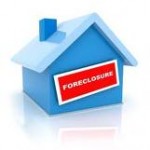 The main reason for homes going into foreclosure in the United States is the high unemployment rate. Homeowners who lose their jobs can’t pay their mortgages and, eventually, their homes go into foreclosure.
The main reason for homes going into foreclosure in the United States is the high unemployment rate. Homeowners who lose their jobs can’t pay their mortgages and, eventually, their homes go into foreclosure.
Subprime Loans
President Obama’s programs to deal with the foreclosure crisis in the United States were originally focused on individuals who had taken out subprime loans. It was originally thought that the subprime loan crisis was the primary cause of the high foreclosure rate in the United States. But there is a new villain in the real estate crisis – constant high unemployment rates in the United States.
Federal Programs Dealing With Unemployment and Foreclosure
The Obama Administration does have programs to help individuals who have lost their jobs delay mortgage payments. Unfortunately, the programs are designed to delay mortgage payments for a period of only two months. Since the average length of unemployment is now nine months, these programs don’t work. As of the present time, only about seventy-four homeowners have qualified for these programs.
The Bank Bailout Program undertaken by the Obama Administration provided $46 billion for the purpose of allowing homeowners whose homes have fallen into foreclosure to keep their homes. The Treasury Department has only spent $1.85 billion dollars to date. It is estimated that more than a million homes have gone into foreclosure because of insufficient assistance from the government for unemployed Americans.
An Obama Administration spokesperson has stated the problems with the programs to assist homeowners whose homes have fallen into foreclosure and are currently unemployed are related to the fact that the programs are voluntary. It is up to the financial institutions, the mortgage servicers and the investors to decide who receives aid and who doesn’t. James Parrot, an adviser at the White House’s National Economic Counsel, stated, “We are trying to be careful in designing programs that, at the end of the day, aren’t just about spending money but getting people back on their feet.”
Home Affordable Mortgage Modification Program (HAMP)
The Home Affordable Mortgage Modification Program was designed as a foreclosure prevention initiative. Approximately 675,000 homeowners have received mortgage modifications under this program. This represents less than 10% of the homeowners who required financial aid to keep their homes from being foreclosed upon.
Department of Housing and Urban Development Program
There is a program that has been initiated by the Department of Housing and Urban Development to deal with unemployed homeowners. More than a million dollars has been allocated to finance this program. The program is designed to provide loans to homeowners who have lost their jobs. These loans can last for a period of up to 24 months. As of the present date, there are only five states that have implemented this program.
Conclusion
The foreclosure mess in the United States, initially caused by granting sub prime loans to unqualified homeowners, is further exacerbated by the unemployment crisis that continues to exist in this country.
Bankruptcy and Foreclosure
We are foreclosure defense lawyers. We help homeowners stay in their homes, even when they’re in foreclosure. We assist homeowners with mortgage modifications and mortgage modification programs that fail to meet their needs.
We litigate predatory lending issues, defective foreclosure lawsuits, defective mortgages and issues involving federal laws and foreclosure. We attend foreclosure court conferences on behalf of our clients. We discuss foreclosure related bankruptcy issues.
In the appropriate circumstances, we file Chapter 7 and Chapter 13 bankruptcieson behalf of our clients. We discuss with our clients why bankruptcy filings will be helpful to them and the types of bankruptcies available to them. Filing bankruptcy can stop foreclosures from moving forward and stop debt collection from collection agencies and collection lawyers. At the end of the bankruptcies, we can help our client in re-establishing credit. We appreciate your spending time on our foreclosure blog.









